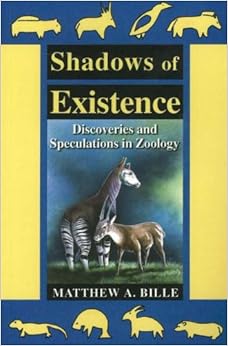“It’s A New Freaking Whale”
Posted by: Craig Woolheater on February 5th, 2014
Those are the words today from cryptozoologist Matt Bille:
When I was researching my book Shadows of Existence, Dr. Merel Dalebout told me she thought there were still new species of beaked whales to be discovered.

According to the paper she just co-wrote for Marine Mammal Science, she was right.
OK, the first specimen of this new whale was found in 1963 and misidentified as a known type. OK, it’s a cryptic species: we didn’t miss it because no one saw it (although there were few sightings, as always with beaked whales): we missed it because it looked like another species (several other species, in fact).
BUT STILL: It’s a new freaking WHALE.
Welcome to the genus, Mesoplodon hotaula!
From press release:
Researchers discover rare new species of deep-diving whale
Researchers have identified a new species of mysterious beaked whale based on the study of seven animals stranded on remote tropical islands in the Indian and Pacific Oceans over the past 50 years.
Beaked whales, a widespread but little-known family of toothed whales distantly related to sperm whales, are found in deep ocean waters beyond the edge of the continental shelf throughout the world’s oceans.
“They are rarely seen at sea due to their elusive habits, long dive capacity and apparent low abundance for some species. Understandably, most people have never heard of them,” says international team leader, Dr Merel Dalebout, a visiting research fellow at UNSW.
The study of the new species, Mesoplodon hotaula, is published in the journal Marine Mammal Science.
The first specimen was a female found on a Sri Lankan beach more than 50 years ago.
On 26 January 1963, a 4.5 metre-long, blue-grey beaked whale washed up at Ratmalana near Colombo. The then director of the National Museums of Ceylon, P.E.P (Paulus) Deraniyagala, described it as a new species, and named it Mesoplodon hotaula, after the local Singhala words for ‘pointed beak’.
However, two years later, other researchers reclassified this specimen as an existing species, Mesoplodon ginkgodens, named for the tusk-like teeth of the adult males that are shaped like the leaves of a ginkgo tree.
“Now it turns out that Deraniyagala was right regarding the uniqueness of the whale he identified. While it is closely related to the ginkgo-toothed beaked whale, it is definitely not the same species,” says Dr Dalebout.

Male specimen of Mesoplodon hotaula that washed up on Desroches Island in the Seychelles in 2009, shown with men from the island. It was found by Wayne Thompson (far right in picture) and Lisa Thompson of the Island Conservation Society of the Seychelles. Credit: Lisa Thompson
About Craig Woolheater
Co-founder of Cryptomundo in 2005.
I have appeared in or contributed to the following TV programs, documentaries and films:
OLN's Mysterious Encounters: "Caddo Critter", Southern Fried Bigfoot, Travel Channel's Weird Travels: "Bigfoot", History Channel's MonsterQuest: "Swamp Stalker", The Wild Man of the Navidad, Destination America's Monsters and Mysteries in America: Texas Terror - Lake Worth Monster, Animal Planet's Finding Bigfoot: Return to Boggy Creek and Beast of the Bayou.








